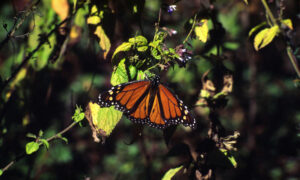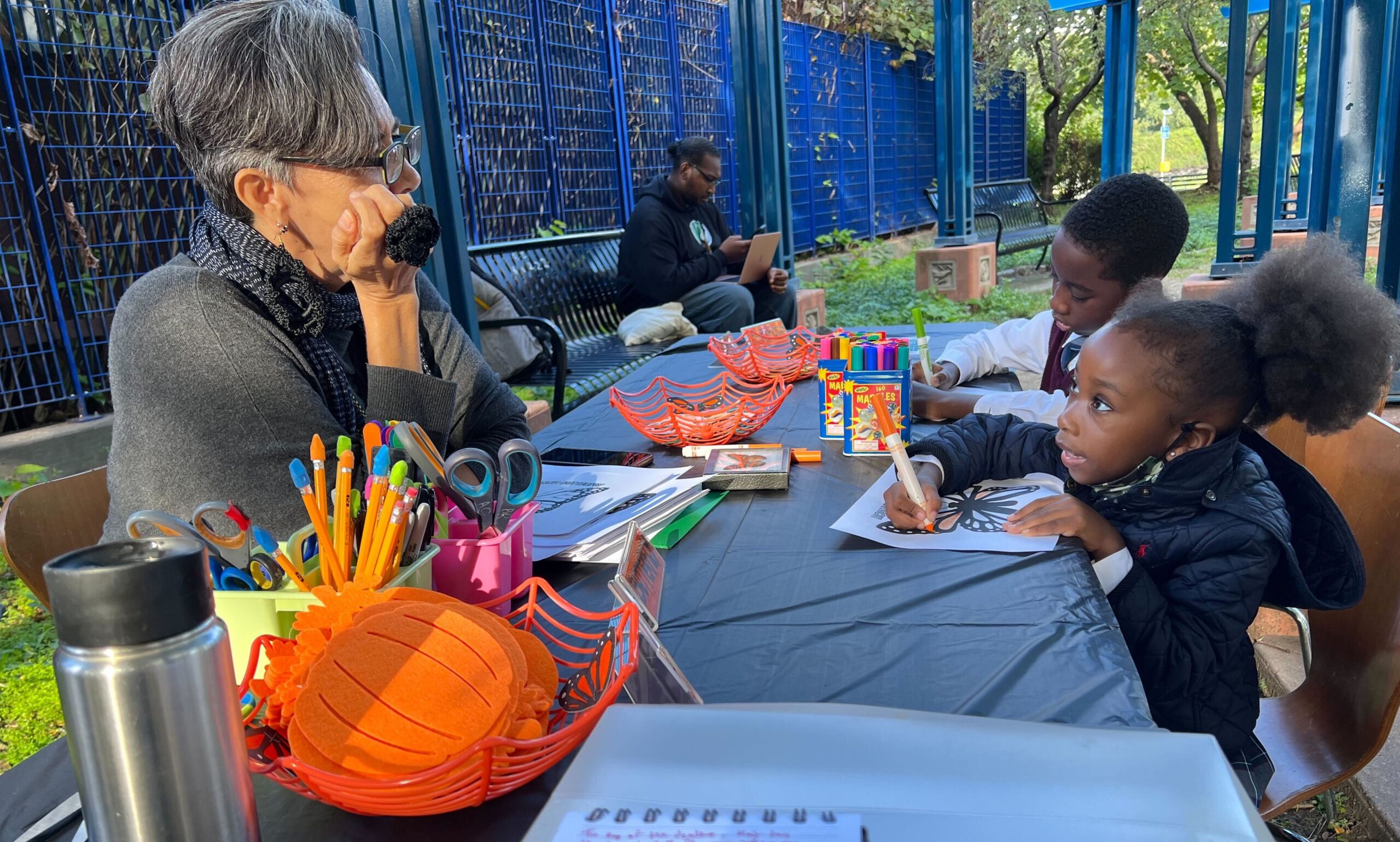When Mott Haven artist Blanka Amezkua was growing up in the Mexican state of Michoacan, every fall the sky would fill with monarch butterflies settling in for the winter after flights of up to 2,500 miles from places as far away as New York and Canada.
Her passion for monarchs has never waned.
Now she’s using her art to help save the brightly colored butterflies, which have been driven to the brink of extinction through loss of habitat, use of harmful pesticides and global warming.
In late September, Amezkua spent two days in Hunts Point Riverside Park conducting a “Hail to the Super Monarch Butterfly” workshop to teach residents from Hunts Point about this migratory insect that is exclusive to North America.
While her effort didn’t draw crowds, those who stopped by out of curiosity often ended up using her colorful craft sticks, markers and scissors to paint and create a monarch butterfly of their own. Once they were engaged, she’d take the opportunity to teach about the monarch – differences between males and females, their emergence from caterpillars, their migratory customs, and the importance of planting milkweed in places they use for stopovers on their long flights north and south. Milkweed is what they feed on and where they plant their eggs.
“I created this workshop to make [people] understand the importance of the monarch butterflies,” said Amezkua, who founded the 3A (AAA3A) gallery on Alexander Avenue in Mott Haven. “If we don’t have [the butterfly] it [creates] a chain reaction.”

Just like bees, the monarchs are important for their ecosystem because they pollinate the wildflowers they feed on. The west and east coasts of North America, including New York State, benefit from them.
The International Union for Conservation of Nature reported in July that the numbers of Monarchs had dropped by more than 99% on the West Coast between 1980 and 2021 and by 84% on the East Coast between 1996 and 2014.
As Amezkua was growing up, the arrival of the monarchs in her region of Mexico often coincided with the celebration of the Day of the Dead, or “Día de los Muertos,” which is Nov. 2. It is a revered annual event because many people believe the Monarchs represent their loved ones who have passed away.
“It means [their] souls are coming back,” Amezkua explained.
The migration south typically starts in mid-August. Sightings of the monarchs are not common in the South Bronx, because of its dense urban environment. Yet they do show up in places with an abundance of plants and flowers.
“There are some at the community garden,” Amezkua said. “I run in Randall’s Island [and] I see them there lately.”
Monarchs overwinter in Mexico and then as a group head back north in the spring. Their short lifespans, which are about four to five weeks, mean their descendants must complete the journey.
Josephine Gordon of Hunts Point was passing by Amezkua’s workshop in the park with her two children when they decided to join the fun.
“I don’t know anything about them,” Gordon confessed. But after learning about the monarchs, she was she was willing to take steps to reverse the endangered status of the butterfly.
When Amezkua isn’t doing monarch teach-ins, she creates artworks in a variety of mediums. One medium includes “papel picado” or pecked paper, a decorative craft made by cutting designs into tissue paper. Another of her works, RE-KONZTRUKT, illustrates women in cotton fabric using embroidery and crochet “in ordinary poses and day to day clothing holding or resting on a tool, ready to transform the world.”
Her next monarch workshop will take place at the Sugar Hill Children’s Museum. The date is not announced yet.

